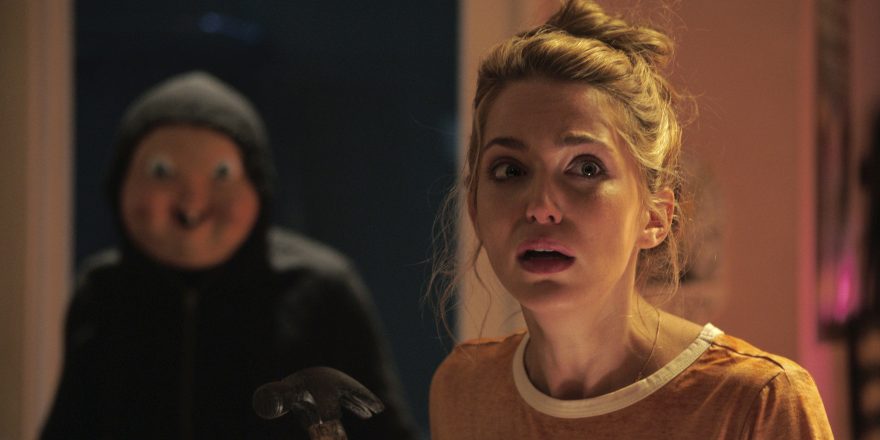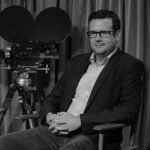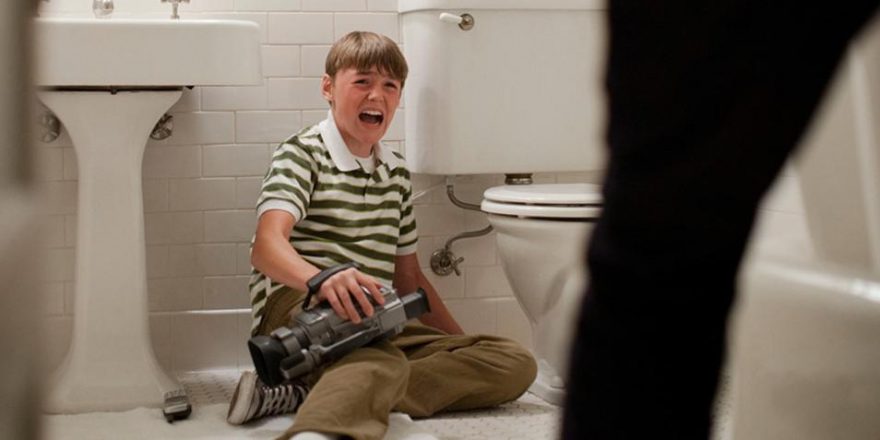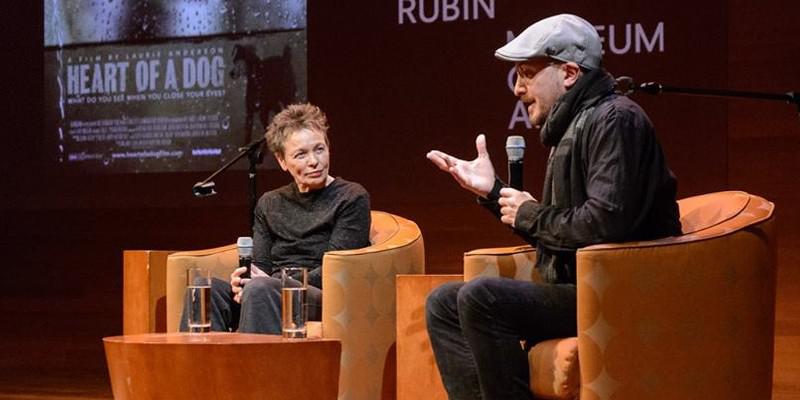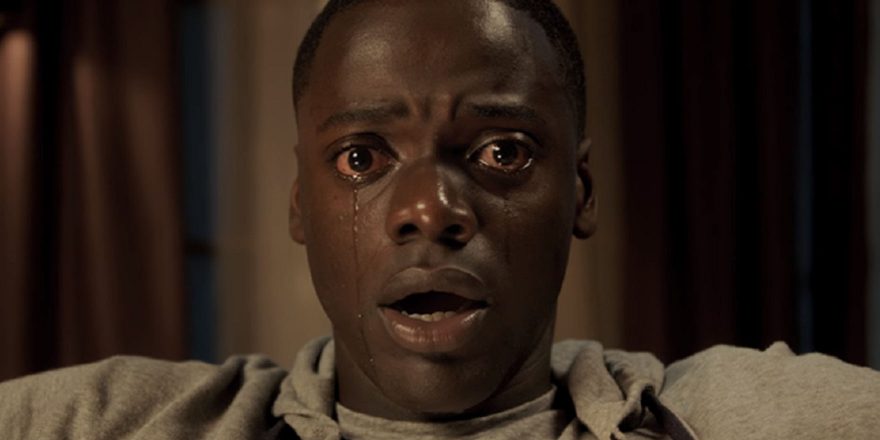“Happy Birthday to Me meets Groundhog Day” is not, upon first impression, the most promising concept for a movie; it sounds more like a pitch from the opening scene of The Player than a viable premise on which to hang an entire feature film. Yet Christopher Landon’s Happy Death Day, which is indeed a cross between those two movies (and a whole lot more), stands alongside Get Out and mother! as not only one of the smartest, funniest horror films of the year, but one of the best films of the year, period, a movie that promises a lot and delivers on everything that it promises.
The story – sorority sister Tree (Jessica Rothe) is murdered on her birthday and then keeps waking up on the morning of that same birthday, forced to relive her murder again and again until she can figure out who the masked figure is that’s tormenting her – is a clever twist on the body-count movies of the early 1980s like Prom Night, the Friday the 13th series, and the aforementioned Happy Birthday to Me. The conceit is that there are just as many murders here as in those films, but with few exceptions, they’re all murders in which the same person is the victim. I suspect that a lot of directors would be happy enough with that twist and just leave it at that, but Landon and screenwriter Scott Lobdell have ideas to burn and the confidence not to belabor any of them – Happy Death Day runs a lean 96 minutes, and every one of those minutes is jammed with wit, style and genuine suspense.
The script sticks pretty slavishly to the Groundhog Day template, not just structurally but even in terms of its main character’s journey from self-absorption to enlightenment. Yet as Jean-Luc Godard once said, it’s not where you take things from, it’s where you take them to, and reimagining Harold Ramis’ comedy classic as a slasher film yields surprisingly satisfying and original results. A lot of the pleasure comes from Landon’s sheer command of filmmaking craft, as he uses every tool at his disposal to generate empathy for a character who’s aggressively unlikable for a good portion of the film. Landon and Rothe don’t shy away from Tree’s unpleasant abrasiveness before her eventual transformation (which makes that transformation all the more satisfying when it comes), but the audience is with her pretty much right from the beginning. That’s because Landon makes subtle variations on his choice of lenses, camera movement, and composition each time Tree repeats her day, visually expressing and delineating her emotional trajectory in a manner that gently directs the viewer to share her point of view.
The highly subjective yet organic and unobtrusive camerawork is then turned against the audience in the movie’s many horror set pieces – the “kills” – where Landon exhibits a talent for manipulating the viewer’s expectations that invites comparisons with early John Carpenter. The shock effects that come across as cheap scares in other movies don’t feel cheap here – they feel earned, both because they’re inextricably bound to the point of view of a fully realized heroine and because Landon achieves his jolts through actual narrative tension and carefully choreographed blocking, not simply by turning the sound low and having the Dolby Stereo suddenly blast the viewer through the back of his or her chair. It helps that the murder mystery aspect of the story plays fair too, even though it initially comes across as a riff on movies like the original Prom Night and Scream, in which virtually every supporting character is a plausible suspect. One of the great pleasures of Happy Death Day’s construction is that it works as a kind of gimmick movie where the fun comes from the multitude of viable killers, yet builds to a conclusion that’s as convincing and logical as it is unpredictable. (The seamless construction is all the more remarkable given the reported mucking around that went on in post-production following a bad test screening – I was amazed to learn there were multiple endings for the film, since the one they came up with is such a perfect resolution.)
As a longtime horror fan and unabashed fan of both early ’80s slasher flicks and their ’90s progeny (Scream, Urban Legend), I would have loved Happy Death Day if it were nothing more than a synthesis of its influences and a rollicking good time at the movies. It is those things – its dialogue is every bit as sharp as Kevin Williamson’s in the Scream movies, and it beats most of its ancestors at their own game on every level of horror technique – but it goes further. A lot further. Happy Death Day is a movie, like Friedkin’s The Exorcist or Romero’s Dawn of the Dead, that transcends formula to tap into the anxieties and obsessions of an entire culture. There’s a reason why this movie works so well and why it has found a huge audience, and it’s not just because Christopher Landon knows how to, as Hitchcock would say, play the audience like a piano – though that’s part of it. The movie’s structure, in which the horror derives from repetition and an inability for the protagonist to move forward, speaks to the jittery unease so many of us feel in the age of social media – an age in which ideas don’t develop as much as they pile up on top of each other online and in our increasingly cluttered minds, minds whose very chemistry has been altered and stunted by technology. The suspicion that plagues Tree throughout the film is a natural extension of lives lived on Facebook and Twitter, places where even “friends” can operate with as much anonymity and maliciousness as the masked killer whose identity Tree seeks to expose.
The other way in which Happy Death Day very effectively channels the concerns of its cultural moment is as a metaphor for the relentless and corrosive repetitiveness of the Donald Trump presidency. The careless taunts lobbed at North Korea and Iran, the systematic erosion of civil rights and the expansion of corporate ones, the revelations about collusion with Russia, the ridiculous skirmishes with everyone from John McCain to the NFL to Gold Star families, and other offenses, ranging from the distracting to the criminal, continually repeat and regenerate in an endlessly cyclical narrative where everyone acknowledges the insanity yet nothing really changes. Happy Death Day mirrors that structure but ultimately provides an exit, the happy ending that seems to be nowhere in sight for our steadily disintegrating country.
Horror movies tend to do well in periods of social unrest, and this year has already seen three new classics of the genre – Get Out, mother!, and Happy Death Day – that are responses to and critiques of the dominant political and cultural trends. Given the apocalyptic nature of the news lately – not just the political horrors of the Trump administration but the hurricanes, fires, mass shootings, etc. – I’m guessing the need to find catharsis through movies that provide a safe and structured way of containing our fears will only increase. Perhaps we’re entering a new golden age of horror similar to the one sparked by Vietnam and Watergate, which gave us Night of the Living Dead, The Texas Chain Saw Massacre, and The Last House on the Left. Let’s just hope we all survive to enjoy it.


